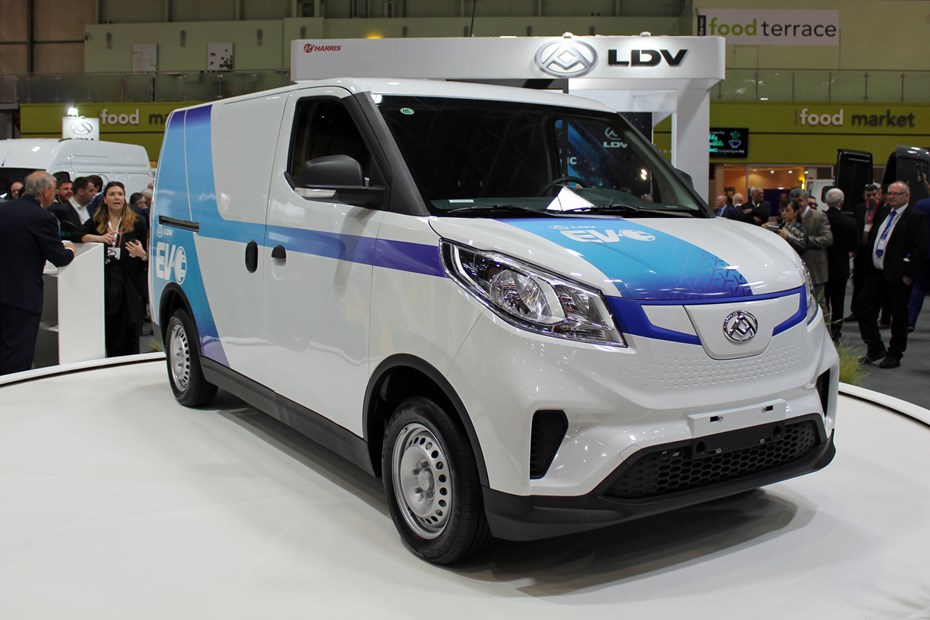UPDATE – the LDV EV30 will now be known as the LDV e Deliver 3 when it goes on sale in the UK in 2020; read the full story from China.
Stealing a march on every other van maker, LDV has launched a new EV30 van that will be exclusively powered by an electric motor and batteries at the 2019 CV Show.
That’s right, there will be no diesel version of the LDV EV30 electric van at all.
This might seem like a radical move – and make no mistake, it really is – but LDV is already having decent success with its existing EV80 electric van, and that’s based on a large van platform that dates back to the LDV Maxus first launched in 2004.
The new EV30 is a purpose-built electric van design, complete with highly unusual aluminium monocoque construction and a driving range of up to 200 miles.
Keep reading for full details.
How big is the LDV EV30 electric van?
The EV30 is a slightly unusual size, falling somewhere between a traditional small van and a proper medium van as we typically know them.
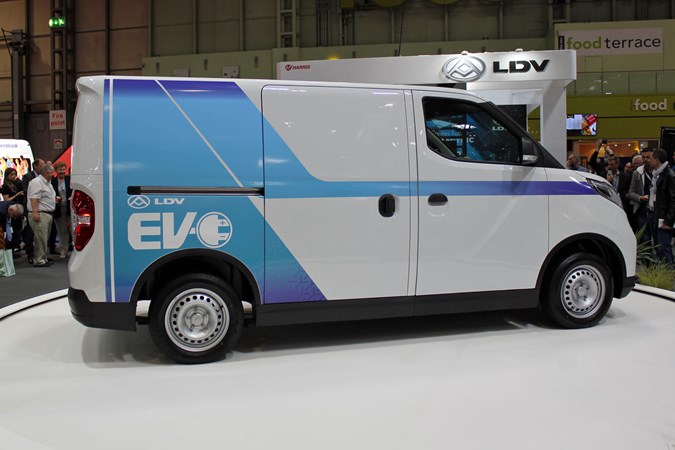
It will come in two body lengths: a standard short-wheelbase (SWB) version 4.5m in length, and a longer 5.1m long-wheelbase (LWB) variant.
Load capacity for the SWB EV30 is 5.0 cubic metres, with the LWB model swallowing 6.3 cubic metres.
As with all electric vans, the battery pack will be mounted under the load floor.
Will all versions of the LDV EV30 electric van have a 200-mile driving range?
The EV30 will be offered with a choice of two battery pack sizes: 35kWh and 55kWh.
The smaller battery promises 127 miles of driving range per charge, with the larger battery claiming ‘over 200 miles’.
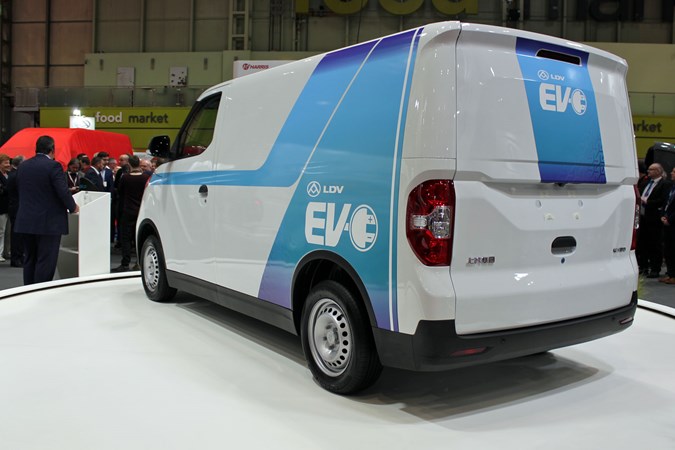
Those figures are measured according to the NEDC testing standard apparently, which means they will fall likely fall slightly when tested to the newer WLTP standard.
However, according to general manager of LDV UK, Mark Barrett, real world driving range figures will follow closer to the new van’s launch, and area expected to be only around 15 miles less than those initial figures.
Regardless, the plan is to provide an electric van solution that will comfortably commute in and out of London on a single charge, and LDV appears to have achieved this.
How long does it take to charge the LDV EV30 electric van?
As usual, this depends on the charger.
A typical ‘Type 2’ single-phase wallbox will need between four and seven hours to complete a full charge.
A proper rapid charger will deliver a battery recharge between 80% and 95% (depending again on the charger) in 40-45 minutes.
What’s the payload of the LDV EV30 electric van?
The smaller models will carry 750kg, with the larger EV30 capable of handling 1,000kg – that’s 1.0 tonne.
This is thanks to the higher gross vehicle weight (GVW) of the LWB version.
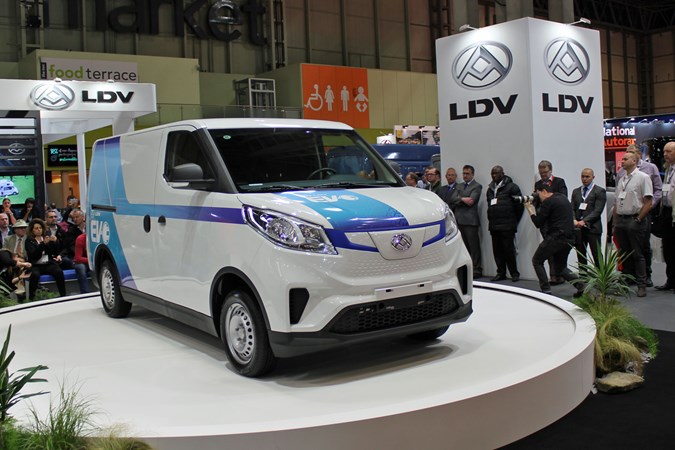
Either way, those are decent figures for an electric van of this size.
How powerful is the LDV EV30, and how fast will it go?
No details on performance just yet, but UK and Irish buyers will benefit from an 85kW electric motor – that’s equivalent to around 115hp.
The EV30 on display at the CV Show 2019 is a Chinese market model, and is fitted with a 70kW (95hp) motor.
Will there be any other changes when the LDV EV30 comes to the UK?
The display van has a top-hinged tailgate, but since UK buyers typically favour a pair of barn doors, EV30s sold here will have barn doors fitted.
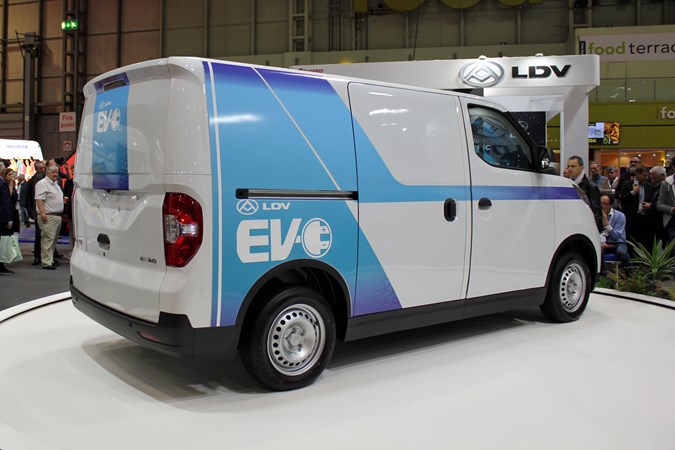
LDV is also promising detail upgrades to trim quality, as well as the option of a dual passenger seat, something that’s also typically favoured by UK buyers.
Is the LDV EV30’s aluminium construction unusual?
Very much so – most vans are made entirely out of steel.
Aluminium is pricier, and potentially more difficult to repair – but it’s also lighter, which is an advantage for electric vans, which have to contend with the heavy weight of the batteries.
The EV30 also has a composite front end, rather than a metal one – another weight-saving feature.
It’s genuinely quite cutting edge.
Who is behind LDV these days?
LDV is an old British van maker’s name, but these days it belongs to Chinese automotive giant SAIC Maxus.
SAIC is China’s largest car company – and the seventh largest in the world – and is proving particularly innovative in the area of electric vehicles.
So don’t doubt that LDV has the resources to pull this new model off.
When will the LDV EV30 electric van go on sale in the UK?
Barratt says that right-hand drive production for the UK is confirmed to start in March 2020 – and order books will open ahead of that in January 2020.
The first UK and Ireland deliveries of the EV30 are scheduled for April 2020.
What’s the price of LDV EV30 electric van?
It’s a little early for official numbers, but Barratt is hopeful that LDV will be able to sell the EV30 for around – or even just under – £30,000.
And that’s before the plug-in vehicle grant discount that’s currently offered by the UK government.
Such pricing would be a remarkable achievement, if it proves possible, placing a more practical electric van than many currently available well within the grasp of many operators.
A new partnership with LeasePlan UK means LDV is now able to offer more competitive leasing products as well.
So the future’s looking bright for LDV?
It would appear so. The firm has had an excellent few previous months with its existing EV80 electric van – confirming significant fleet deals with Milk and More among others at the CV Show – and has other new products arriving in the near future, too.
These include a D60 passenger SUV, an all-new generation of V80 large van, and a pickup. This last will be a facelifted version of the T60 pickup sold elsewhere in the world called the T70.
Both the new V80 van and the T70 pickup are set to be powered by a new 214hp 2.0-litre twin-turbo diesel engine with 480Nm of torque and an optional eight-speed automatic gearbox.
Also read:
>> LDV e Deliver 3 electric van full details
>> LDV EV80 electric van review
>> The Parkers guide to electric vans
Just so you know, we may receive a commission or other compensation from the links on this website - read why you should trust us.


